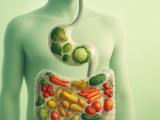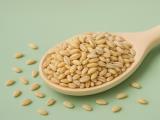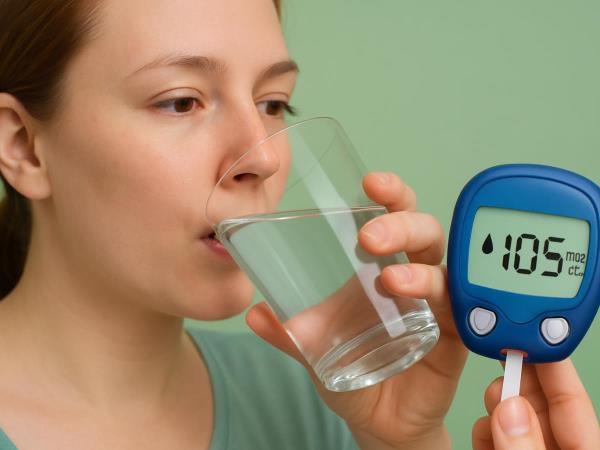Why is Stable Blood Sugar So Important (and How Quickly Can We Disrupt It)?
Blood sugar, or glucose, is something your body absolutely needs for energy. But when blood sugar is too high, or rises too quickly, you may feel tired, irritable, weak, get headaches, and suddenly crave something sweet because your energy has dropped again.
Such fluctuations are increasingly common today because we eat quickly, often don’t get enough fiber, not enough vegetables, drink too little water, and don’t move enough. Statistics from 2024 also show that the average European consumes 64% more refined carbohydrates than health organizations recommend. These carbohydrates cause rapid spikes in blood sugar.
However, the good side of this story is: there’s a lot you can fix starting today. Small steps, big benefits.
Foods that Release Energy Slowly – the Secret of Stable Blood Sugar
One of the most important things is to provide the body with foods that release energy slowly, not all at once. This helps you avoid the sudden spike known as the sugar rollercoaster. This means avoiding refined carbohydrates—those that are pre-processed to stay soft, white, and are quickly digested. Examples: white bread, white rice, sweet snacks, pastries ... Instead, opt for whole foods like whole grains, leafy vegetables, whole apples, pears, oats, whole-grain rice, and proteins that keep you satiated longer.
Research from 2020 showed that meals higher in fiber reduce blood sugar fluctuations by 44%, because fiber slows the rapid release of glucose into the blood. Fibers act as natural slowers. The secret is for food to enter the body not as a wave, but as a calm stream.
Movement After Meals – Ancient Wisdom Confirmed by Modern Science
If you've ever watched elderly people or those in the countryside, you may have noticed that after lunch, they don’t immediately sit on the couch. Especially older folks like to say: Eat and then go get some fresh air. It turns out this wisdom was way ahead of its time. Movement after eating prevents blood sugar from rising too quickly. Muscles then act like sponges, absorbing glucose from the blood and turning it into energy.
The American Diabetes Association (ADA) recommends a 30-minute walk after your main meal. A study from 2022, published in Diabetologia, showed that a gentle walk after eating can lower blood sugar by up to 30%. That’s huge. It’s like a natural medicine you can use every day, free of charge.
In spring 2025, a study of 400 people showed that those who were active for 15–20 minutes after lunch had 18% lower daily blood sugar spikes than those who just sat. The best part is, you don’t have to see this movement as exercise. All that's needed is:
- a walk around the house
- a trip to the store
- calmly tidying up the kitchen
- working in the garden ...
Folk healers like to say: movement after eating awakens the body, while modern science explains: muscles use up the glucose.
Are You Drinking Enough? Water Is the Greatest, Easiest, and Cheapest Medicine
When you have too much sugar in your blood, the body tries to expel it through the kidneys. If you don’t drink enough, this process slows and the sugar stays where you don’t want it. Experts recommend 1.5 to 2 liters of water a day. On hot days, even more. This isn’t just advice, it’s important for the heart, brain, and digestion ...
Nutritionists advise against sugary drinks, juices, energy drinks, and even sweetened teas, as they can raise sugar levels by 20 to 50% in just one hour.
A 2025 study of 1,200 people proved that simply increasing water intake by 0.5 liters daily lowers the average adult blood sugar level by 12%. The body feels the difference right away. When we’re dehydrated, it means we’re drinking too little and there’s too little water in the system.
How to Combine All These Tips into a Real-Life Routine?
It sounds simple, but sometimes we just need a bit better organization. The best thing is to focus on better food, more movement, and enough water. The body works like an orchestra: when all the organs play together, the result is more harmonious.
Also ... In a 2020 report, experts found that a combination of more fiber, a 30-minute walk, and 2 liters of water reduces blood sugar fluctuations by 54%.
Folk Wisdom Confirmed by Modern Science
Grandmothers have always known what works. They often recommended foods from the earth, seasonal vegetables, fibrous grains, post-meal movement, and moderation. Today, we can link this to many studies which show that this is the most natural way to regulate blood sugar.
Folk wisdom says: eat slowly, move, drink water, and choose food that nourishes you—not food that just fills you up. Science adds: with more mindful choices of ingredients you can significantly reduce sugar spikes, relieve the pancreas, and strengthen the body's resilience.
Natural Solutions Are Always Better Than You Think
If you had to choose just three things to start doing today, we would advise:
- Eat more whole foods, less white bread, and little (or almost no) processed foods.
- Take a walk after meals. Even 10 minutes is better than nothing.
- Drink enough water throughout the day. Let water be your best friend.
These three things are cheap, accessible, and proven effective. Your body will reward you with more energy, smaller blood sugar fluctuations, better focus, less fatigue, and a more stable feeling overall. Research clearly shows that the average quality of life improves by 30% when blood sugar is stabilized.









 Would you like to be informed about news on the website?
Would you like to be informed about news on the website?

